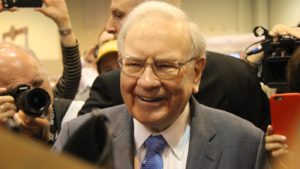The US stock market has been on fire over the past few years. The S&P 500 has nearly doubled in five years while the tech-heavy Nasdaq has surged by around 123% in that time.
In stark contrast, the plodding FTSE 100 has risen by around 17%. Even when adding in the generous dividends from many Footsie stocks, it doesn’t hold a candle to the US indexes.
Unfortunately, the FTSE 100 lacks the giant tech companies that dominate the digital world we rely on daily (smartphones, search engines, social media and more).
That’s not to say the FTSE 100 has no world-class giants. It does. AstraZeneca is one and recently became the first UK-listed firm to reach a £200bn market cap.
Yet it’s sobering to think that a $3trn+ Nvidia (or Apple or Microsoft) can move up or down by the equivalent of an AstraZeneca in an afternoon.
The bears are starting to growl
However, these valuations are alarming a growing number of market watchers. One is economist Harry Dent. He’s called this period “the second tech bubble” (after the first one around 2000) and the “bubble of all bubbles“.
In a recent interview with Fox Business, Dent said: “I think we’re going to see the S&P go down 86% from the top, and the Nasdaq 92%. A hero stock like Nvidia, as good as it is, and it is a great company, [goes] down 98%. Boy, this is over.”
He predicted this will happen in 2025.
History says this
Now, I’m going to stick my neck out and say I don’t see Nvidia’s market cap collapsing 98% to just $61bn (half its forecast revenue for its current financial year). If it did, then I’d be buying Nvidia shares hand over fist.
At some point though, the market will crash again. But nobody can say for sure when that will happen.
The important thing to remember is that the UK and US stock markets have a 100% success rate of recovery. Not only that, but history shows they’ve then marched on to new highs, regardless of how severe the downturn was.
High-quality stocks have a habit of recovering.
SAINTS
One FTSE 250 investment trust that’s survived many crashes, as well as two World Wars, is The Scottish American Investment Company (LSE: SAIN).
Established in 1873, SAINTS (as it’s known) aims to increase income above inflation by investing in growing companies that pay dividends. The portfolio also derives income from bonds and property.
Top stock holdings include Novo Nordisk and Microsoft, which are benefitting from the respective mega-trends of weight-loss drugs and artificial intelligence.
Regrettably, SAINTS’ share price hasn’t matched the global market in recent years. It hasn’t held Nvidia due to its minimal dividend. Yet Nvidia alone contributed about 25% of the S&P 500’s gains in the first half of 2024!
Top 10 holdings (as of 31 July)
| Percentage of fund | ||
|---|---|---|
| 1 | Watsco | 4.0% |
| 2 | Microsoft | 3.7% |
| 3 | Taiwan Semiconductor | 3.4% |
| 4 | Novo Nordisk | 3.4% |
| 5 | Fastenal | 3.2% |
| 6 | Partners | 2.8% |
| 7 | Procter & Gamble | 2.7% |
| 8 | Apple | 2.7% |
| 9 | Atlas Copco | 2.6% |
| 10 | Schneider Electric | 2.5% |
While there’s a risk this underperformance could continue, surely Nvidia’s meteoric rise can’t last forever. As market gains become more evenly distributed in the coming years, SAINTS’ performance should improve.
Meanwhile, the trust recently increased the dividend for the 50th straight year. The forward yield is only 2.8%, but I expect the payout to grow for many more years (that’s not guaranteed though).
I’d buy its shares if I didn’t already hold them.
This post was originally published on Motley Fool







